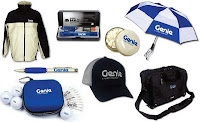1. Start with a product with a high potential. Some merch has a higher marketing potential than others. For example:
T-shirt with a logo - low potential because every artist has one
Limited edition vinyl released signed by the artist - high potential
A t-shirt is so common that it doesn't give you much to talk about in social media, while something that's more limited does.
2. Define your target audience. Your entire fan base may not be your target, since there is fragmentation within it that you might not be aware of. Are you trying to reach your true fans who will buy anything? Are you trying to reach just the female part of your audience? Are you trying to reach just the ones in cold weather climates? Try to define your target audience as precisely as possible.
3. What do you want your audience to do? Think about this before you launch a campaign. Do you want them to:
- simply discover the product
- explore the product and learn about it
- create and share content about it to amplify the product's reach
- purchase the product
You're probably saying, "I want them all," but sometimes just defining a single goal makes your marketing job easier and more likely to succeed.
4. Choose your social network wisely. Not all social networks are capable of delivering the same results, and in fact, some are better than others at certain activities. For instance:
- Facebook's Timeline makes it ideal for product-related posts.
- Pinterest works well with collections and product-related content, but be careful because your audience might not be there.
- Twitter Cards bring images and details from a product page that now make it better at social merchandising, but be careful because it can also be considered SPAM.
- YouTube is great to tell stories if you're good at creating great video content.
- Instagram and Tumblr are great for user-generated and organic momentum.
5. Use as much visual product content as you can. Social networks today are a lot more visual than they were even last year. Get the best images that you can to gain the most attention, especially in mobile environments.
6. Take note of your process so you can reuse it. You'll be a lot more efficient if you think about what you're doing along the way in terms of using it again at a later time. As with everything, keep what works, but don't necessarily ditch the things that don't until you're sure they're not working for you.
Marketing takes some thought to be successful, but it's more about thinking about your audience rather than the rocket science aspect of it. All it takes is some time.
----------------------------------
Help support this blog. Any purchases made through our Amazon links help support this website with no cost to you.
You should follow me on Twitter for daily news and updates on production and the music business.
Check out my Big Picture blog for discussion on common music, engineering and production tips and tricks.


No comments:
Post a Comment